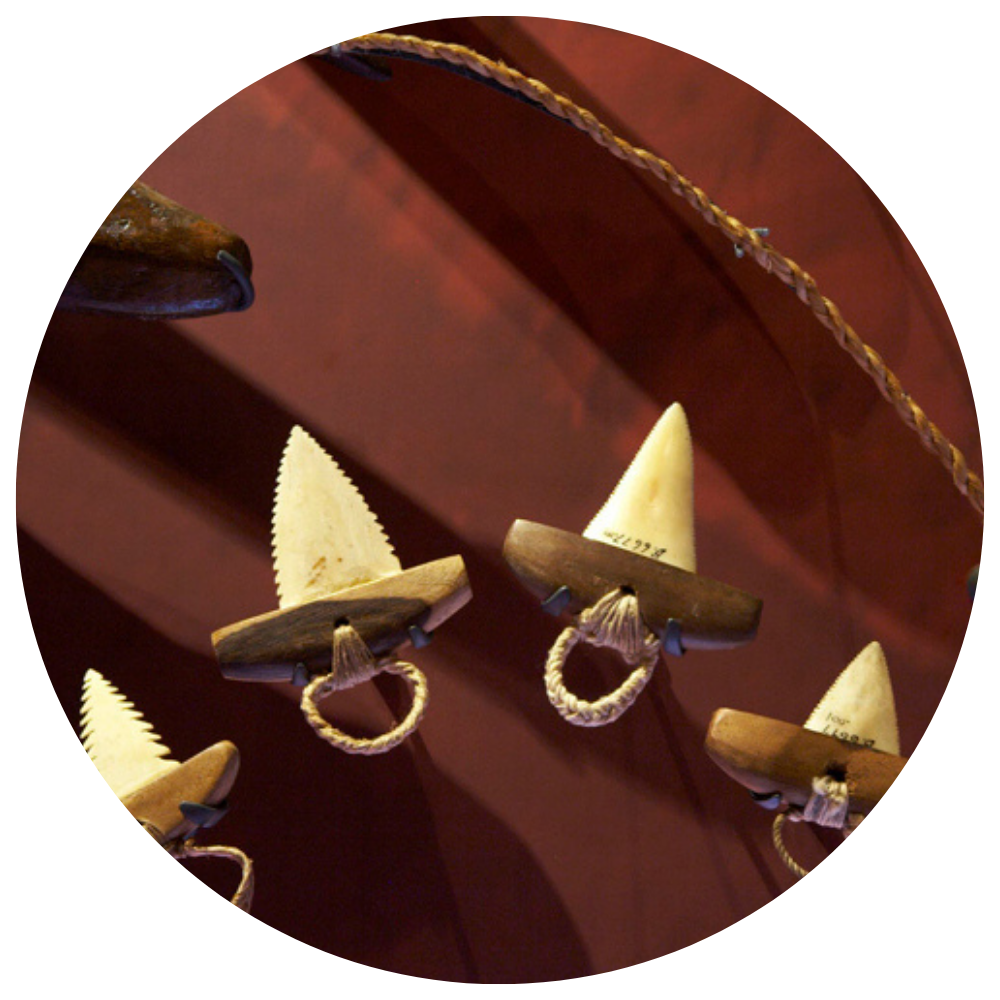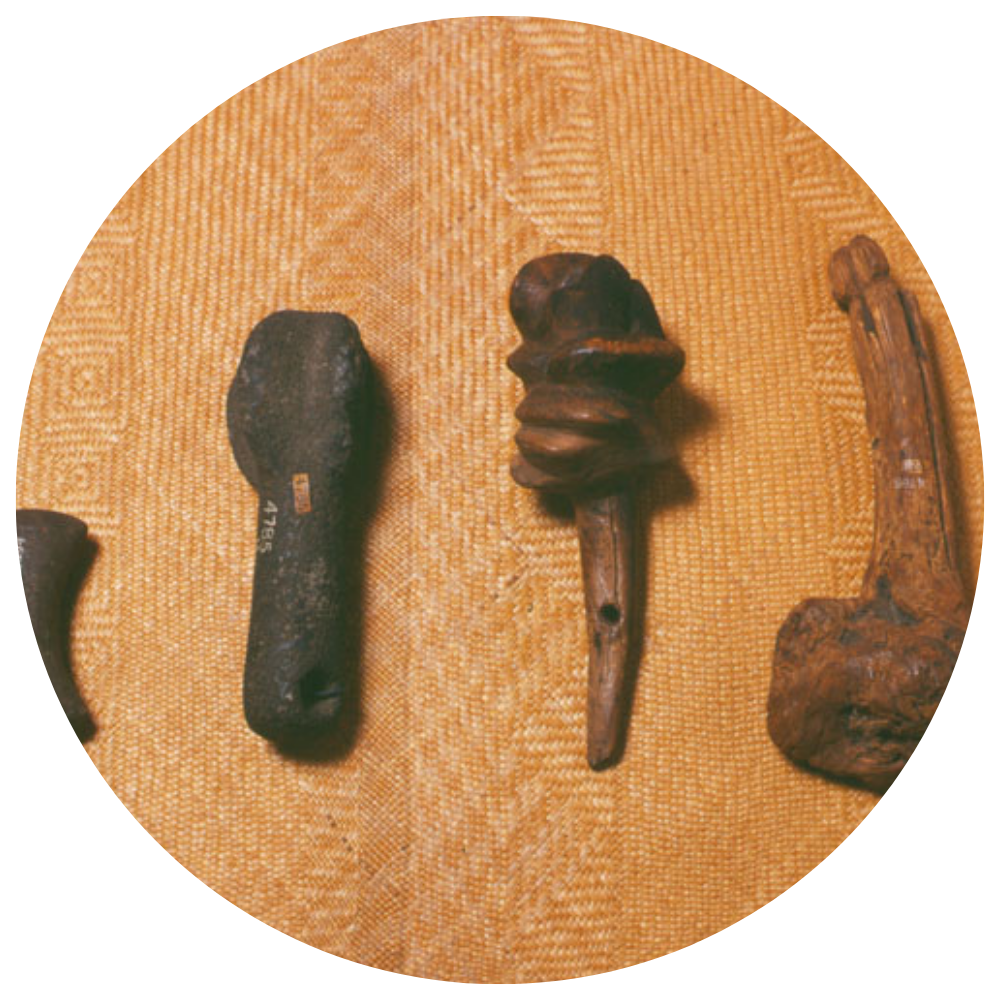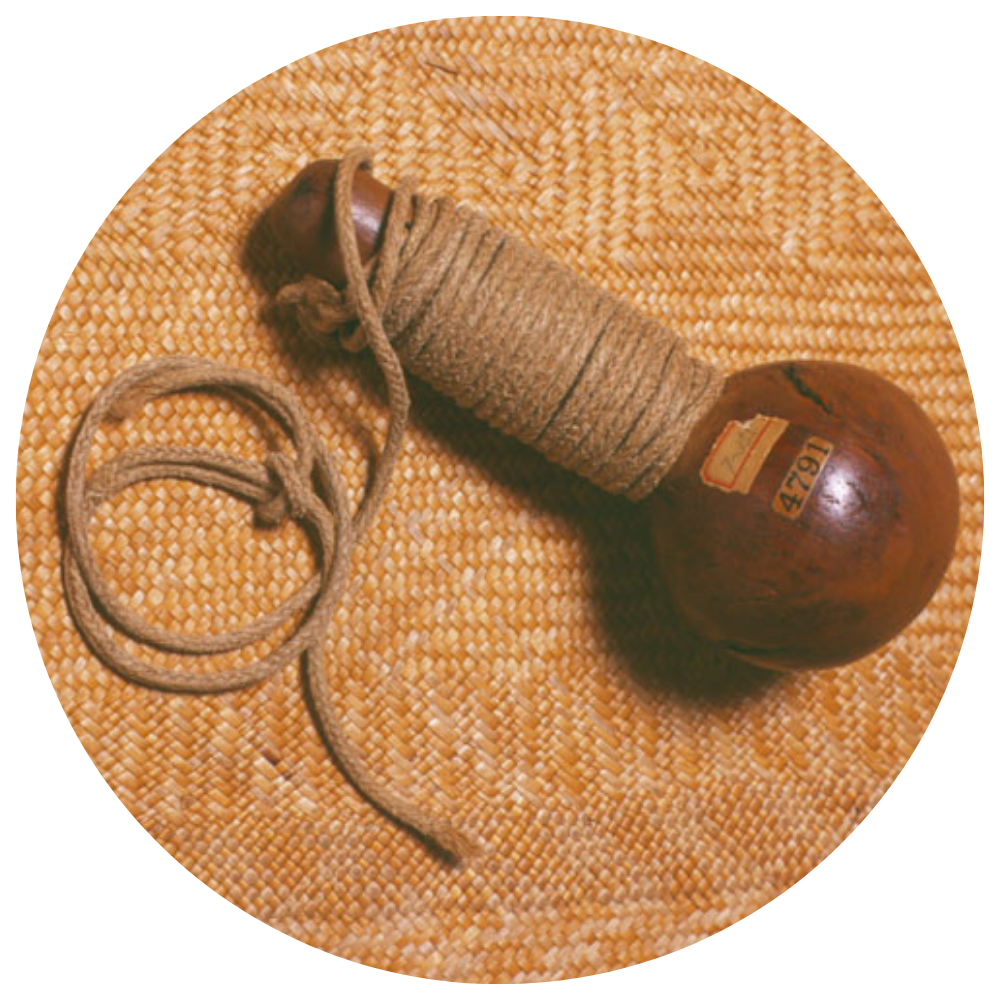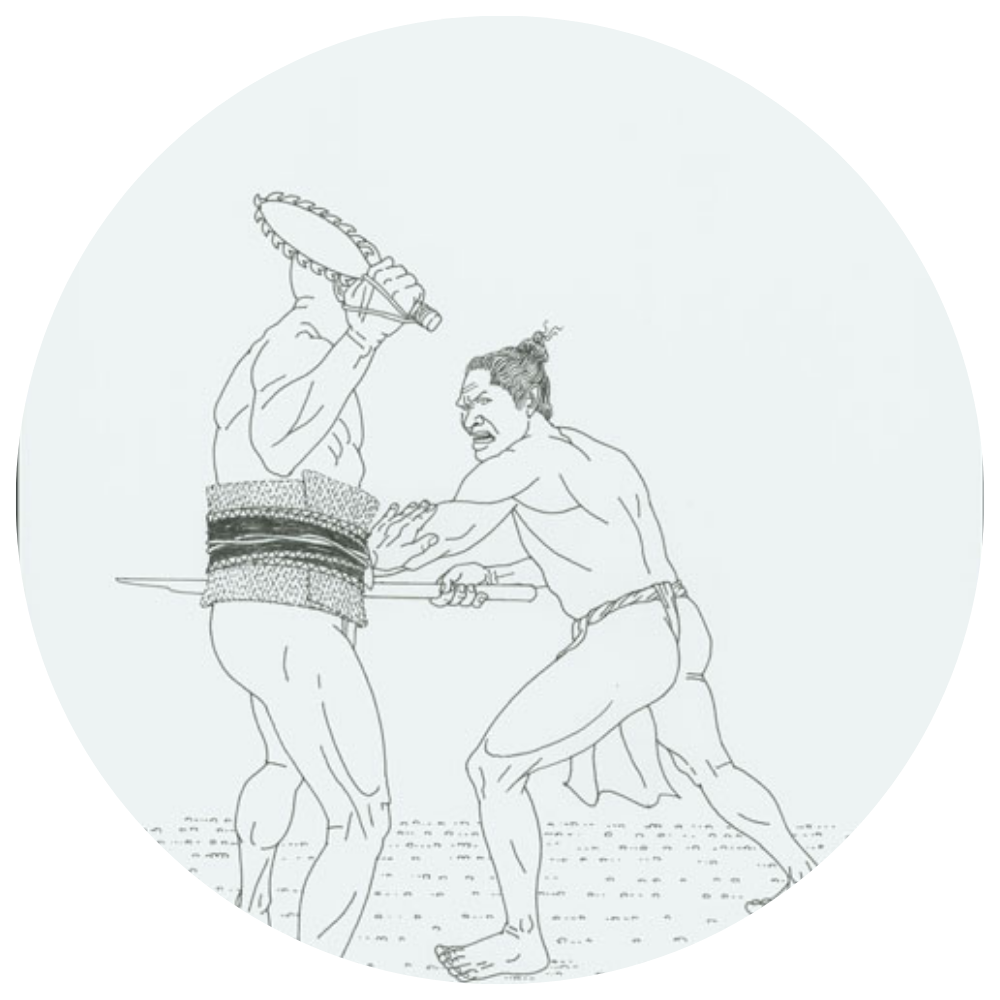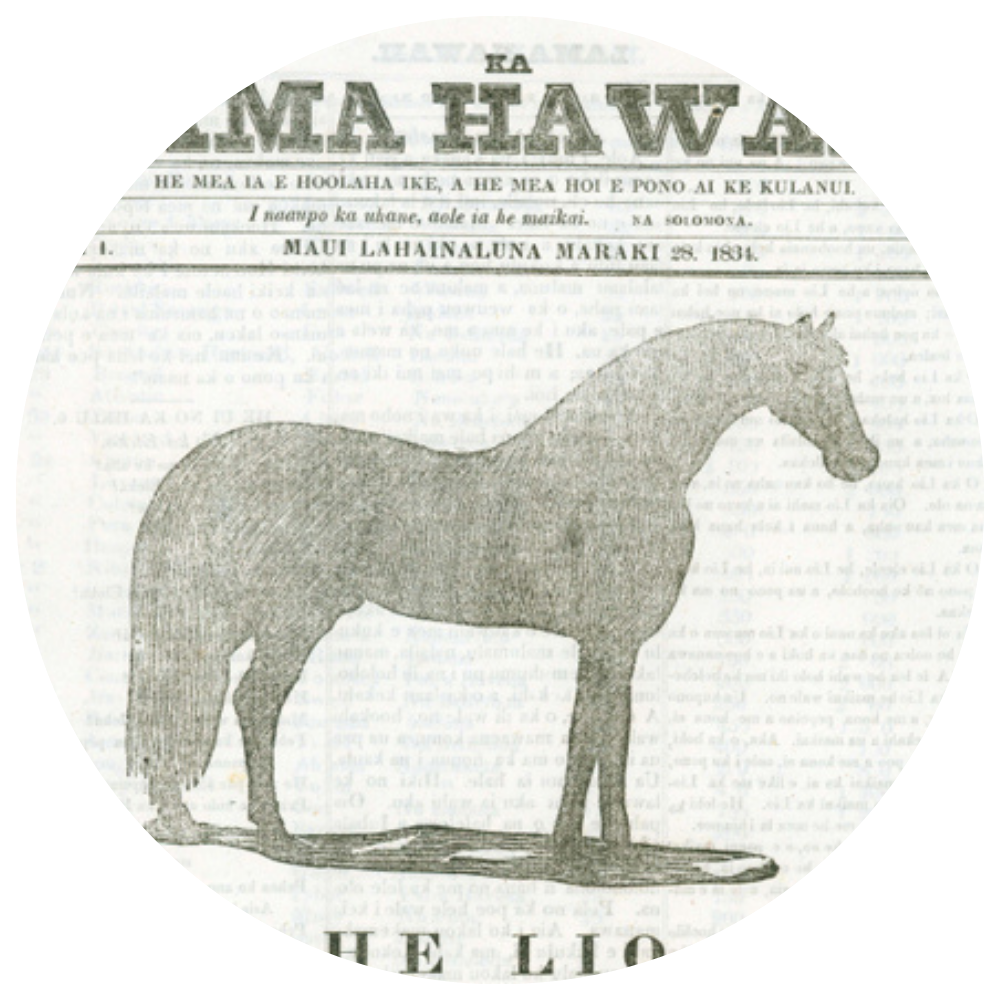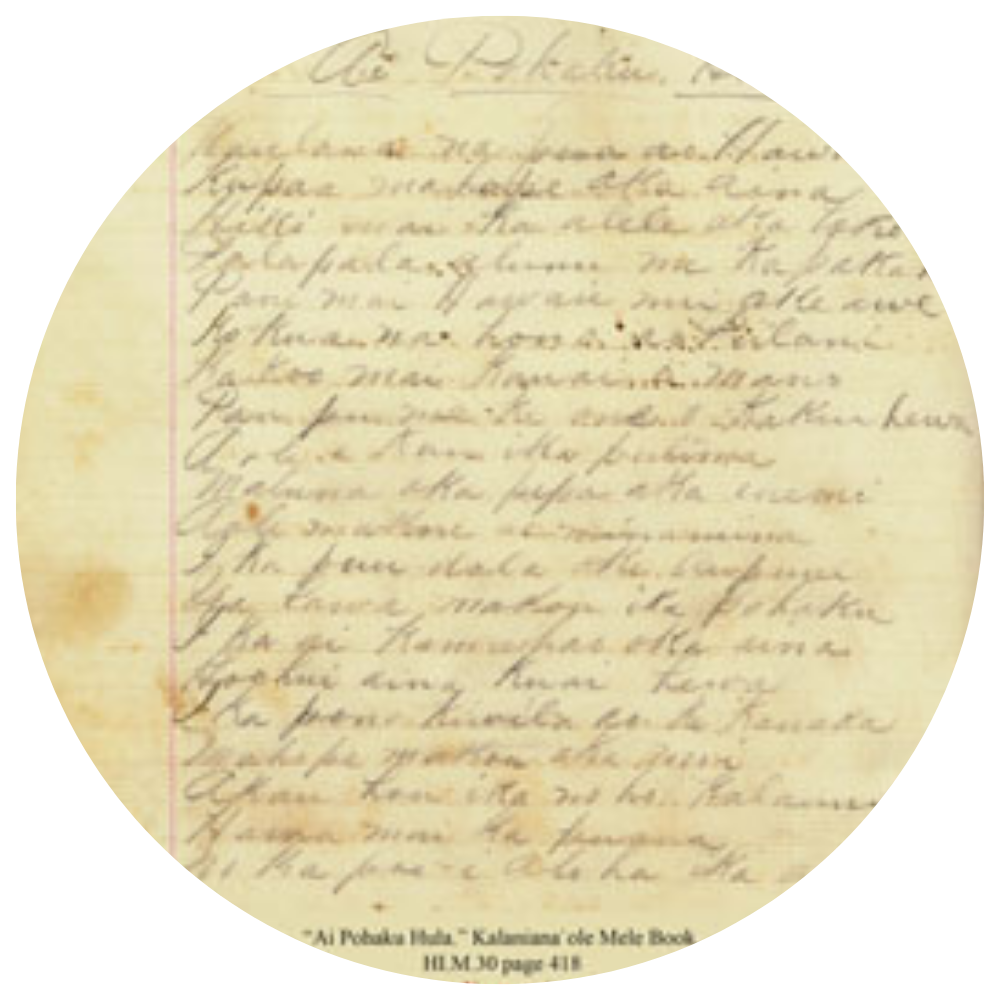Mea Kaua

Weapons
“E hume i ka malo, e hoʻokala i ka ihe”
(Gird the loincloth, sharpen the spear)
A call to the warrior class to prepare for combat
The call to battle has been answered by a host of warriors across many lands. Cultures have subsequently honored the acts and accomplishments of the most skilled among this brave class. Alexander the Great, Julius Caesar, Richard the Lionheart, Sun Tzu, and Miyamoto Mushashi live on as heroic persona recalled in song, poetry, and prose. The omission of a great deal of Hawaiʻi’s Native-produced history has meant that much about the great warrior class in Hawaiʻi remains unknown. Recent scholarship has, however, begun to reacquaint a wider public with once renowned Hawaiian figures. The names of great warriors such as Kekūhaupiʻo, Kahekilinuiʻahumanu, Keoua Kūahuʻula, Hana, Kulupe, Mokokalaʻi, Kaluaikoʻolau, and others, are joining the more familiar Kamehameha Paiʻea as celebrated Hawaiian warriors of the past.
These fighters, and others like them, were part of a Hawaiian warrior class that excelled in the art of combat. In periods outside of direct warfare they formed small, specialized units of fierce, highly trained warriors. These “special forces” trained in pā lua (schools in the art of breaking bones), becoming highly efficient in the use of the assorted weapons that populated the Hawaiian battlefield.
From the intimidating pololū (long spear) that could reach a length of twenty feet, to the fiercely effective leiomano (shark-tooth weapon) that could disembowel an opponent with one swipe, a wide variety of weapons served the Hawaiian warrior well throughout differing terrains and battle conditions. A pīkoi (tripping cord) was effective in putting an opponent on the ground, perhaps to be finished off by the warrior’s pāhoa (dagger), pōhaku newa (stone hand club), or kaʻane (strangling cord). The ihe (short spear), often barbed, might be the fiercer looking of the two, but a lāʻau pālau (long club) could just as effectively end an enemy’s life. On the water, pōhaku kuʻi waʻa (canoe breakers) – large stones with cordage attached for retrieval – represented an early form of Hawaiian “artillery.” Particular weapons sometimes became synonymous with certain island wahi (places). The 19th-century Hawaiian historian Samuel Kamakau wrote of “ka poe uleule ala o Waikiu a me Honokalani, a me na keiki pahelehele pohaku o na Kaeleku” (the expert stone-tossers of Waikiu and Honokalani, and the quick stone-slinging lads of Kaeleku [Māui]) whose skill with the maʻa (sling) was unsurpassed.
While pre-contact battle has been described as mostly hand-to-hand combat, Native Hawaiians later adapted to introduced technologies and became adept at the cannons and firearms that would come to dominate battlefields. Whether old style or new, a Hawaiian warrior’s weapons carried the powers of life or death and the relationship between warrior and weapon was often intimate. Weapons were seen by their owners not simply as functional tools of warfare, but rather as objects with mana (spiritual force) and abilities of their own. Extraordinary weapons were sometimes given names by their handlers. Early Hawaiian histories celebrate famous weapons such as Kahehumakua, the feared fighting club of Kamehoa, and Kapahielihonua, the massive earth-slicing weapon of Kaeloikamalama. Kamehameha Paiʻea bestowed the named Lopaka upon the powerful pū kuniahi (cannon) that was captured from the British ship Fair American. Later described as “ka puuhonua o ko Kamehameha aoao” (the sanctuary of Kamehameha’s side), Lopaka would gain fame at the decisive battles of Kapaniwai on Māui and Pāʻauhau on Oʻahu. A century later in 1896, Kaluaikoʻolau of Kauaʻi withstood repeated military attempts by the Provisional Government to capture and send him to the Hansen’s disease colony at Kalaupapa, Molokaʻi using Kaimonakamakeloa, the treasured rifle he named.
Dedicated training in the skills that once produced both renowned Hawaiian warriors and weapons has reemerged alongside research of past stories of warfare within Hawaiian-language texts. Training in these arts was heavily suppressed for much of the 19th century, excepting for the earnest but relatively short-lived efforts of Mōʻī Kalākaua in the 1870s and 1880s. A significant contemporary practice has evolved among hui (groups) throughout Hawaiʻi, some who link their training back to the pā lua of Kalākaua and men who trained there. A new generation of practitioners and craftsmen are continuing this ancient art, and in doing so are refocusing attention on the glories of great Hawaiian warriors of the past.
Image:
A dagger of wood and shark teeth attached with olonā (formerly having feathers) said to have been taken from Hawaiʻi to England on Captain Cook’s 3rd Voyage. Photo by David Franzen, June 13, 2011.
Artifact Number: 1973.275
Images

